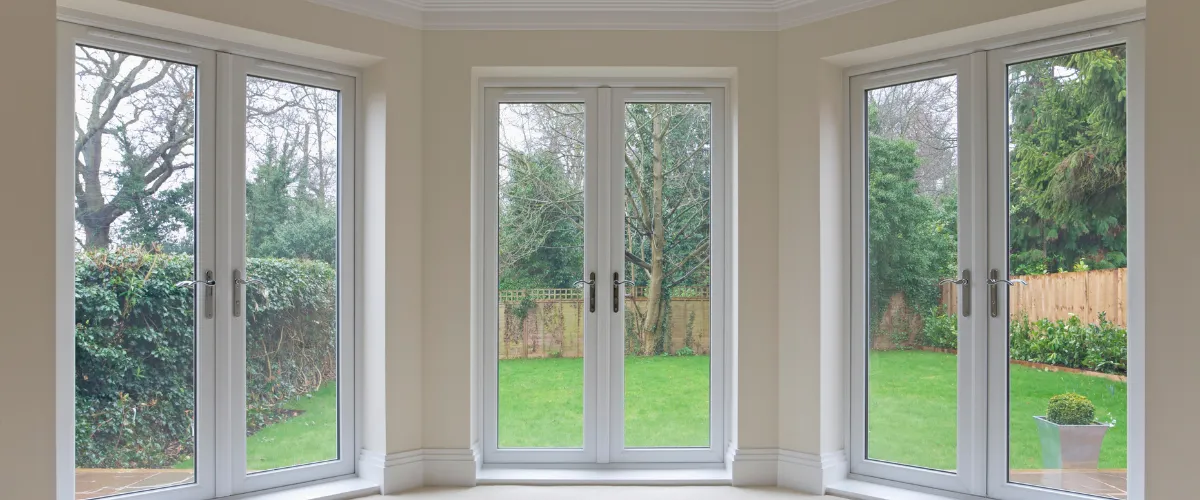Comparing Sunrise VS Andersen Windows For Your Home: The Ultimate Guide
Choosing between vinyl and wood-clad windows can be a daunting task for any homeowner. Two major brands frequently compared in this space are Sunrise Windows and Andersen.
Both offer high-quality options, but the right choice depends on your home’s needs and personal preferences. In this guide, we’ll break down the aesthetic, durability, energy efficiency, and cost aspects of vinyl vs. wood-clad windows to help you make the best decision.

Aesthetic Differences
Appearance and style considerations
Vinyl windows offer a clean, modern look for homes. They come in various colors but mostly stick to neutral tones. People like them because they match many home styles without much fuss.
Wood-clad windows bring warm, natural vibes inside.
You can paint or stain their wooden parts to fit your house’s look perfectly. Each window style makes a place feel different.
Choosing between vinyl and wood-clad windows also means thinking about the outside of your house. Vinyl is low-key and fits almost anywhere, while wood-clad has rich textures that stand out more.
So, if you want easy matching, go with vinyl. If unique charm is your goal, consider wood-clad options for new windows or replacement windows in your space.

Energy Efficiency
| Feature | Vinyl Windows | Wood-Clad Windows |
|---|---|---|
| Insulation | Excellent insulation. Limits heat transfer. | Good insulation but can vary due to wood type. |
| Energy Efficiency | Highly energy efficient. Lowers energy bills. | Energy efficient but may need more maintenance to retain efficiency. |
| Maintenance | Low maintenance. Doesn’t need painting or staining. | Higher maintenance. May need painting or staining to prevent efficiency loss. |
| Cost Over Time | Lower energy costs due to better insulation. | Potentially higher energy costs if not properly maintained. |
Comparing insulation and energy costs
Energy costs and insulation are key when picking windows. Vinyl windows offer great insulation and are energy efficient, leading to lower energy bills. They need little upkeep.
Wood-clad windows give good insulation and efficiency too. Yet, they need more care to keep their efficiency. This can lead to potentially higher energy costs over time.

Cost Comparison
Initial investment vs. long-term value
| Feature | Vinyl Windows | Wood-Clad Windows |
|---|---|---|
| Insulation | Excellent insulation. Limits heat transfer. | Good insulation but can vary due to wood type. |
| Energy Efficiency | Highly energy efficient. Lowers energy bills. | Energy efficient but may need more maintenance to retain efficiency. |
| Maintenance | Low maintenance. Doesn’t need painting or staining. | Higher maintenance. May need painting or staining to prevent efficiency loss. |
| Cost Over Time | Lower energy costs due to better insulation. | Potentially higher energy costs if not properly maintained. |
Vinyl windows offer a more affordable option upfront and are known for their durability and low maintenance, helping homeowners save money in the long run.
Wood-clad windows, while more expensive initially, can enhance a home’s value and aesthetic appeal. They require more care but can last many years with proper maintenance. Both options provide good energy efficiency, reducing energy costs over time.

FAQs
Let Our Experts Guide You
Choosing between vinyl and wood-clad windows depends on what you value most for your home. Vinyl offers a budget-friendly choice with less upkeep. Wood-clad brings a classic look and better insulation but needs more care.
Think about style, cost, and energy savings before deciding. This guide aims to make your decision clearer by comparing key factors of each window type.
Contact us today to get your window installation in Gallatin, done right. (615) 861-2315
